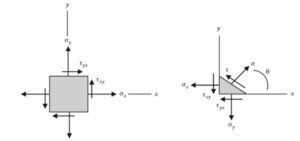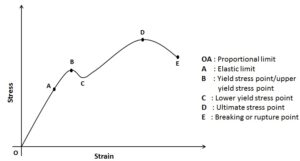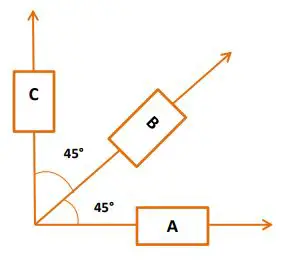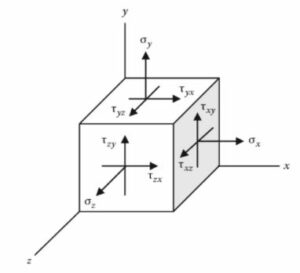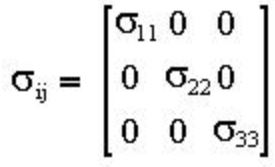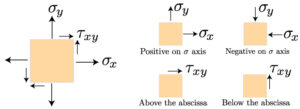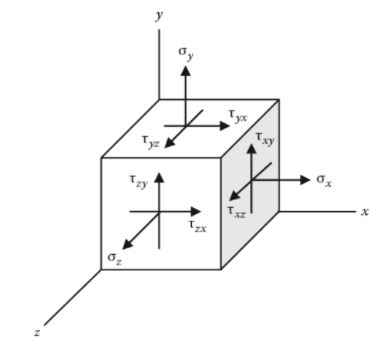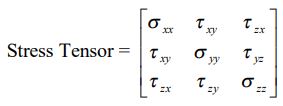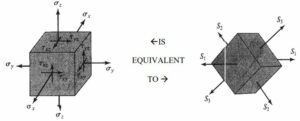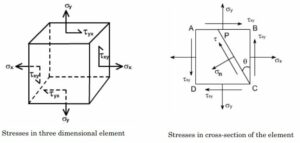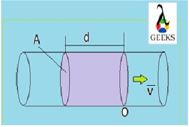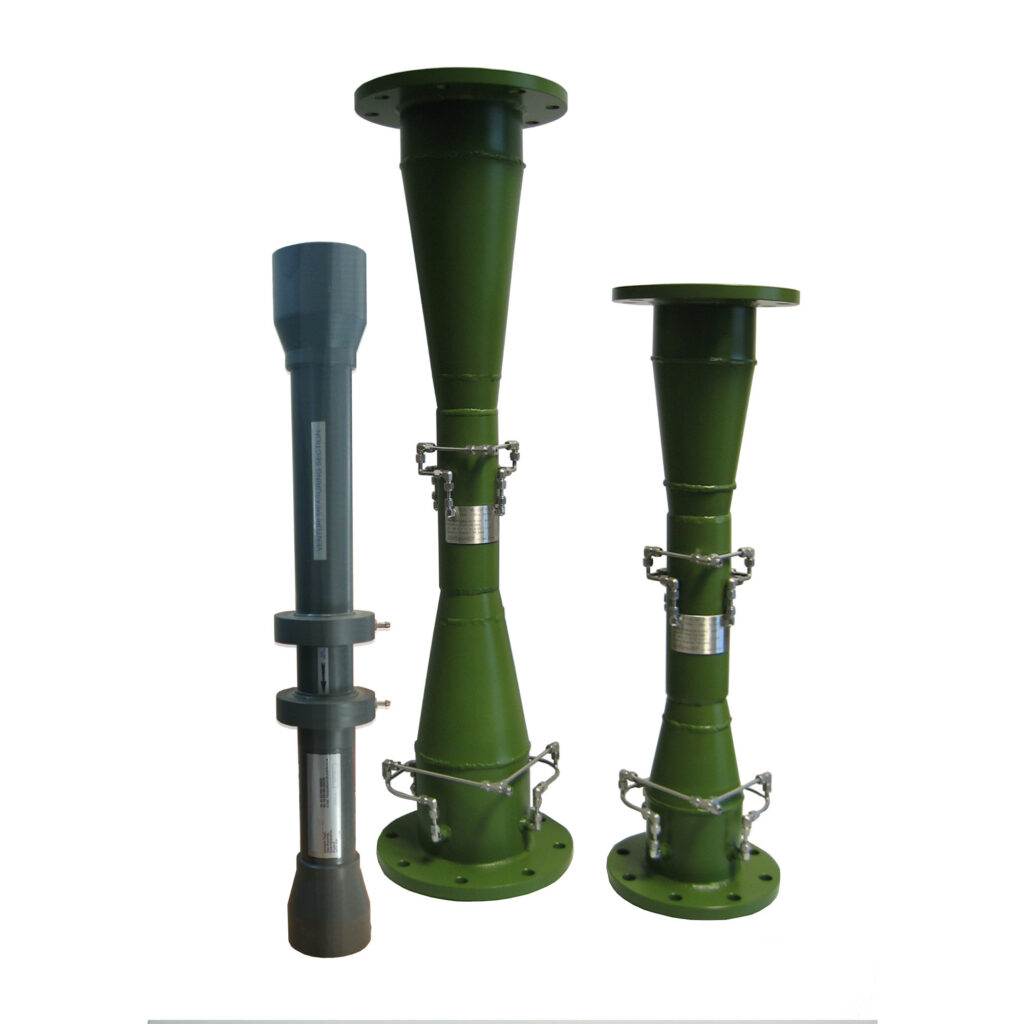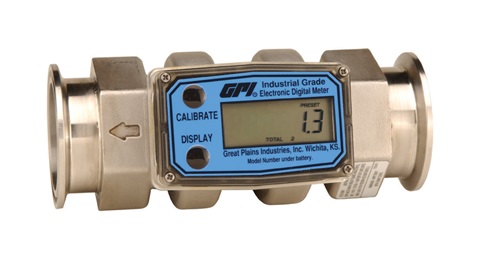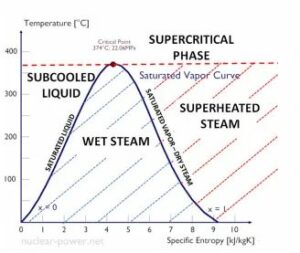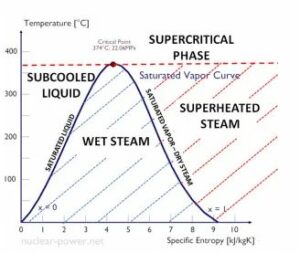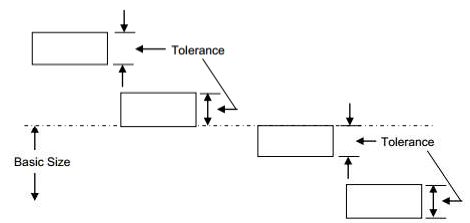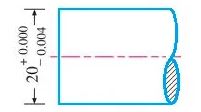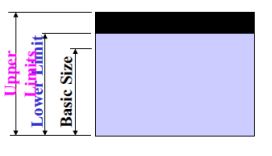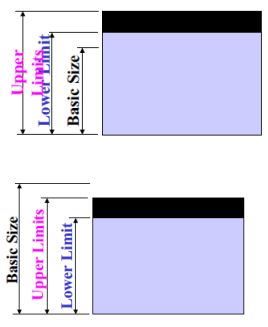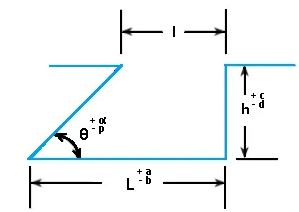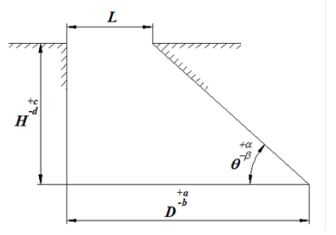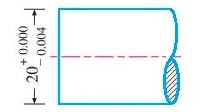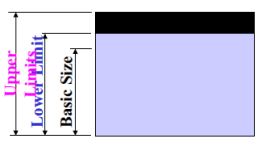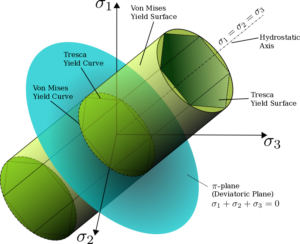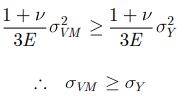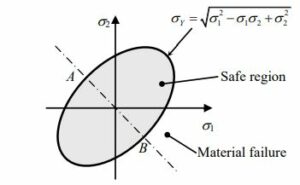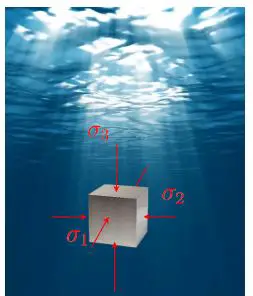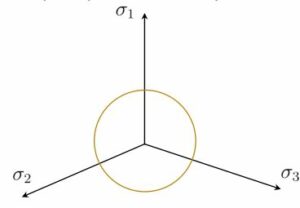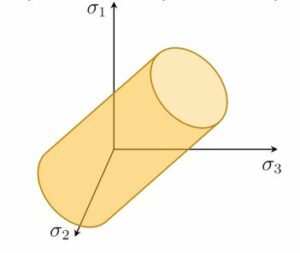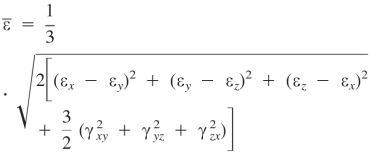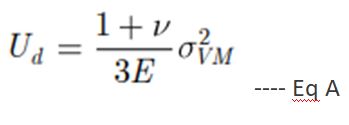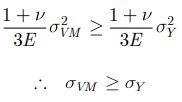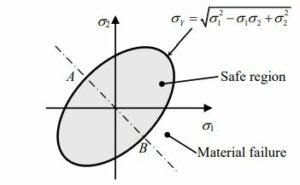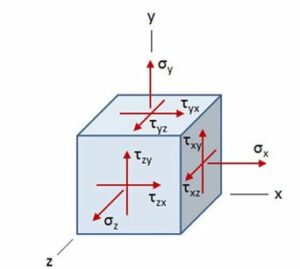How to Calculate Mass Flow Rate
Introduction
When it comes to fluid dynamics, understanding how to calculate mass flow rate is crucial. Mass flow rate is a fundamental concept in engineering and thermodynamics that measures the amount of mass passing through a given point in a system per unit of time. It is an essential parameter in various applications, including pipe flow, nozzle design, and flowmeter calibration.
Definition and Notation
Before diving into the calculation of mass flow rate, let’s define some key terms and notation. Mass flow rate, denoted as ṁ, is the mass of a substance flowing through a given cross-sectional area per unit of time. It is typically measured in kilograms per second (kg/s) or other mass units per time unit.
To calculate the mass flow rate, we need to consider the density of the fluid, the velocity of the fluid, and the cross-sectional area through which the fluid is flowing. The formula for mass flow rate is:
ṁ = ρ * A * V
Where:
– ṁ is the mass flow rate
– ρ is the density of the fluid
– A is the cross-sectional area
– V is the velocity of the fluid
Calculation of Mass Flow Rate
To calculate the mass flow rate, we need to know the density of the fluid, the velocity of the fluid, and the cross-sectional area. Let’s break down the steps involved in calculating the mass flow rate:
-
Determine the density of the fluid: The density of the fluid can be obtained from reference tables or measured using specialized instruments. It is typically expressed in kilograms per cubic meter (kg/m³).
-
Measure the velocity of the fluid: The velocity of the fluid can be measured using various techniques, such as flowmeters or pitot tubes. It is crucial to ensure accurate velocity measurements for precise mass flow rate calculations.
-
Determine the cross-sectional area: The cross-sectional area refers to the area through which the fluid is flowing. It can be calculated using geometric formulas or measured directly using appropriate instruments.
-
Plug the values into the formula: Once you have obtained the density, velocity, and cross-sectional area, you can plug these values into the mass flow rate formula: ṁ = ρ * A * V. Calculate the product of the density, cross-sectional area, and velocity to obtain the mass flow rate.
Importance of Accurate Measurement
Accurate measurement of mass flow rate is crucial in many engineering applications. It allows engineers to understand and control the flow of fluids in various systems. Whether it’s optimizing the performance of a chemical process or designing efficient HVAC systems, accurate mass flow rate measurement ensures proper operation and prevents potential issues.
By accurately calculating the mass flow rate, engineers can make informed decisions regarding system design, equipment sizing, and process optimization. It enables them to identify potential bottlenecks, optimize energy consumption, and ensure the safety and reliability of the system.
Factors Affecting Mass Flow Rate
Several factors can affect the mass flow rate of a fluid. Understanding these factors is essential for accurate calculations and system design. Here are some key factors that influence mass flow rate:
-
Fluid properties: The density and viscosity of the fluid play a significant role in determining the mass flow rate. Different fluids have different densities and viscosities, which affect their flow characteristics.
-
Cross-sectional area: The size and shape of the cross-sectional area through which the fluid is flowing directly impact the mass flow rate. A larger area allows for a higher flow rate, while a smaller area restricts the flow.
-
Velocity: The velocity of the fluid is a critical factor in determining the mass flow rate. Higher velocities result in higher mass flow rates, while lower velocities lead to lower flow rates.
-
Pressure: Pressure differentials across a system can affect the mass flow rate. Higher pressure differentials can increase the flow rate, while lower differentials can restrict it.
-
Temperature: Changes in temperature can affect the density and viscosity of the fluid, thereby impacting the mass flow rate. It is essential to consider temperature variations when calculating mass flow rate.
By taking these factors into account and accurately calculating the mass flow rate, engineers can ensure the efficient and reliable operation of various systems.
In conclusion, understanding how to calculate mass flow rate is essential in fluid dynamics and engineering. By considering the density, velocity, and cross-sectional area, engineers can accurately determine the mass flow rate of a fluid. Accurate measurement of mass flow rate is crucial for system design, optimization, and ensuring the proper functioning of various processes. By considering factors such as fluid properties, cross-sectional area, velocity, pressure, and temperature, engineers can make informed decisions and achieve desired outcomes in their applications.
How to Calculate Mass Flow Rate from Volumetric Flow Rate
Definition and Calculation of Volumetric Flow Rate
When it comes to fluid dynamics, understanding the concept of volumetric flow rate is essential. Volumetric flow rate refers to the amount of fluid that passes through a given point in a specified amount of time. It is commonly denoted as Q and is measured in units such as cubic meters per second (m³/s) or liters per minute (L/min).
To calculate the volumetric flow rate, you need to know the cross-sectional area of the flow and the velocity of the fluid. The formula to calculate volumetric flow rate is:
Volumetric Flow Rate (Q) = Cross-sectional Area (A) × Velocity (V)
The cross-sectional area is the area perpendicular to the direction of flow, and the velocity is the speed at which the fluid is moving. By multiplying these two values together, you can determine the volumetric flow rate.
Relationship between Mass Flow Rate and Volumetric Flow Rate
While volumetric flow rate provides information about the volume of fluid passing through a point, mass flow rate gives insight into the mass of fluid passing through that same point. Mass flow rate is denoted as m-dot and is measured in units such as kilograms per second (kg/s) or pounds per minute (lb/min).
To calculate the mass flow rate, you need to consider not only the volumetric flow rate but also the density of the fluid. The formula to calculate mass flow rate is:
Mass Flow Rate (m-dot) = Volumetric Flow Rate (Q) × Density (ρ)
The density of a fluid is a measure of its mass per unit volume. It is typically denoted as ρ and is measured in units such as kilograms per cubic meter (kg/m³) or pounds per cubic foot (lb/ft³). By multiplying the volumetric flow rate by the density, you can determine the mass flow rate.
It’s important to note that the relationship between mass flow rate and volumetric flow rate depends on the density of the fluid. Different fluids have different densities, so the same volumetric flow rate can correspond to different mass flow rates depending on the fluid being considered.
In engineering and various fields of science, calculating mass flow rate from volumetric flow rate is crucial for understanding fluid behavior, designing systems, and ensuring proper measurements. By applying the principles of fluid mechanics and thermodynamics, engineers and scientists can accurately determine mass flow rates in pipes, nozzles, orifices, and other flow systems.
In summary, the mass flow rate can be calculated from the volumetric flow rate by multiplying it by the density of the fluid. Understanding this relationship is fundamental in fluid dynamics and plays a vital role in various engineering and scientific applications.
How to Calculate Mass Flow Rate from Pressure Gradient
Introduction to Pressure Gradient
In fluid dynamics, the pressure gradient refers to the change in pressure over a given distance in a fluid. It plays a crucial role in understanding the flow behavior of fluids in various engineering applications. When there is a pressure difference within a fluid, it creates a force that drives the fluid to move from an area of high pressure to an area of low pressure. This phenomenon is known as fluid flow.
Hagen Poiseuille Equation
To calculate the mass flow rate from a pressure gradient, we can utilize the Hagen Poiseuille equation. This equation is derived from the principles of fluid mechanics and is particularly useful for calculating the flow rate of viscous fluids through pipes, orifices, and nozzles.
The Hagen Poiseuille equation relates the pressure gradient, fluid viscosity, and the geometry of the flow system. It can be expressed as follows:
Where:
– Q is the volume flow rate
– ΔP is the pressure gradient
– η is the dynamic viscosity of the fluid
– L is the length of the flow path
– A is the cross-sectional area of the flow path
Calculation of Mass Flow Rate from Pressure Gradient
To calculate the mass flow rate from a given pressure gradient, we need to consider the density of the fluid. The mass flow rate is the measure of the mass of fluid passing through a given point per unit time. It can be calculated by multiplying the volume flow rate by the density of the fluid.
The volume flow rate (Q) can be determined using the Hagen Poiseuille equation. Once we have the volume flow rate, we can calculate the mass flow rate (M) using the following equation:
Where:
– M is the mass flow rate
– Q is the volume flow rate
– ρ is the density of the fluid
By incorporating the density of the fluid into the calculation, we can accurately determine the mass flow rate from a given pressure gradient.
Example Calculation
Let’s consider an example to illustrate the calculation of mass flow rate from a pressure gradient. Suppose we have a fluid flowing through a pipe with a pressure gradient of 100 Pa/m. The fluid has a dynamic viscosity of 0.01 Pa·s and a density of 1000 kg/m³. The length of the pipe is 10 m, and the cross-sectional area is 0.1 m².
Using the Hagen Poiseuille equation, we can calculate the volume flow rate (Q):
Substituting the given values into the equation, we get:
Now, we can calculate the mass flow rate (M) by multiplying the volume flow rate by the density:
Therefore, the mass flow rate of the fluid through the pipe is 98 kg/s.
Conclusion
In conclusion, the mass flow rate can be calculated from a pressure gradient by utilizing the Hagen Poiseuille equation and considering the density of the fluid. By understanding the principles of fluid dynamics and applying the appropriate equations, engineers and scientists can accurately determine the mass flow rate in various fluid flow systems.
How to Calculate Mass Flow Rate of Fuel in an Engine
Fuel mass flow rate is an essential parameter to consider when analyzing the performance of an engine. By accurately calculating the mass flow rate of fuel, engineers and technicians can gain valuable insights into the efficiency and effectiveness of the engine’s fuel consumption. In this section, we will explore the importance of calculating fuel mass flow rate, the formula used for its calculation, and the calculation of Brake Specific Fuel Consumption (BSFC) and Indicated Specific Fuel Consumption (ISFC).
Importance of Calculating Fuel Mass Flow Rate
The mass flow rate of fuel is a crucial factor in understanding the overall efficiency of an engine. It provides valuable information about the amount of fuel consumed per unit of time, allowing engineers to evaluate the engine’s performance and make necessary adjustments for optimal operation.
By accurately calculating the fuel mass flow rate, engineers can determine the engine’s fuel efficiency and identify any potential issues or areas for improvement. This information is particularly valuable in the automotive industry, where fuel consumption plays a significant role in both environmental impact and cost-effectiveness.
Formula for Fuel Mass Flow Rate
The mass flow rate of fuel can be calculated using a simple formula that takes into account the volume flow rate, density, and velocity of the fuel. The formula is as follows:
Mass Flow Rate = Volume Flow Rate x Density
To calculate the volume flow rate, you need to multiply the cross-sectional area of the flow by the velocity of the fuel. The density of the fuel can be obtained from reference tables or by measuring it directly.
Calculation of BSFC and ISFC
Brake Specific Fuel Consumption (BSFC) and Indicated Specific Fuel Consumption (ISFC) are two important metrics used to evaluate the fuel efficiency of an engine.
BSFC is a measure of the amount of fuel consumed per unit of power produced by the engine. It is calculated by dividing the fuel mass flow rate by the power output of the engine. The units of BSFC are typically in grams per kilowatt-hour (g/kWh).
ISFC, on the other hand, is a measure of the amount of fuel consumed per unit of work done within the engine cylinder. It is calculated by dividing the fuel mass flow rate by the indicated power output of the engine. The units of ISFC are also typically in grams per kilowatt-hour (g/kWh).
Both BSFC and ISFC provide valuable information about the fuel efficiency of an engine. By monitoring these metrics and making adjustments to the engine’s operation, engineers can optimize fuel consumption and reduce environmental impact.
In conclusion, calculating the mass flow rate of fuel in an engine is essential for evaluating its performance and fuel efficiency. By understanding the importance of this calculation, utilizing the appropriate formula, and considering metrics such as BSFC and ISFC, engineers can make informed decisions to improve the overall efficiency of the engine.
How to Calculate Mass Flow Rate of Air in an Engine
Measurement of Air Flow Rate
When it comes to understanding the performance of an engine, one crucial parameter to consider is the mass flow rate of air. The mass flow rate of air refers to the amount of air that passes through the engine per unit of time. This measurement is essential for various applications, including engineering, thermodynamics, and fluid mechanics.
To accurately determine the mass flow rate of air in an engine, it is necessary to measure the volume flow rate, density, and velocity of the air. These measurements can be obtained using different techniques and instruments, depending on the specific requirements of the engine and the available resources.
Here are some common methods used to measure air flow rate:
-
Flowmeters: Flowmeters are devices specifically designed to measure the flow rate of a fluid, including air. There are various types of flowmeters available, such as orifice meters, venturi meters, and magnetic flowmeters. These instruments utilize different principles to measure the flow rate accurately.
-
Pitot Tubes: Pitot tubes are simple yet effective devices used to measure the velocity of a fluid. They consist of a small tube with one end pointed directly into the fluid flow and the other end connected to a pressure gauge. By measuring the pressure difference between the two ends of the tube, the velocity of the fluid can be determined.
-
Anemometers: Anemometers are handheld devices commonly used to measure wind speed. However, they can also be used to measure air flow rate in engines. Anemometers typically utilize rotating cups or propellers to determine the velocity of the air, which can then be used to calculate the mass flow rate.
Formula for Air Mass Flow Rate
Once the necessary measurements of volume flow rate, density, and velocity have been obtained, the mass flow rate of air can be calculated using a simple formula. The formula for calculating the mass flow rate is as follows:
Mass Flow Rate = Volume Flow Rate x Density
The volume flow rate represents the amount of air passing through the engine per unit of time, usually measured in cubic meters per second (m³/s). The density of the air is the mass of the air per unit volume, typically measured in kilograms per cubic meter (kg/m³).
By multiplying the volume flow rate by the density, we obtain the mass flow rate of air. This value represents the actual mass of air passing through the engine per unit of time and is crucial for understanding the engine’s performance and efficiency.
It is important to note that the units used in the calculations should be consistent. For example, if the volume flow rate is measured in cubic feet per minute (CFM), it should be converted to cubic meters per second (m³/s) before calculating the mass flow rate.
In conclusion, calculating the mass flow rate of air in an engine is a fundamental aspect of understanding its performance. By accurately measuring the volume flow rate, density, and velocity of the air, and applying the appropriate formula, engineers and researchers can gain valuable insights into the engine’s efficiency and make informed decisions for optimization and improvement.
How to Calculate Mass Flow Rate of Dry Air
To understand how to calculate the mass flow rate of dry air, we need to start by defining what mass flow rate is. Mass flow rate is a fundamental concept in fluid dynamics that measures the amount of mass passing through a given point per unit of time. In the case of dry air, it refers to the amount of air passing through a specific location in a system.
Calculation of Mass Flow Rate of Dry Air
Calculating the mass flow rate of dry air involves considering several factors, such as the volume flow rate, density, and velocity of the air. The formula for calculating mass flow rate is:
Mass Flow Rate = Volume Flow Rate x Density
Let’s break down each component of the formula and understand how to calculate them.
1. Volume Flow Rate
The volume flow rate represents the volume of air passing through a given point per unit of time. It is usually measured in cubic meters per second (m³/s) or cubic feet per minute (CFM). To calculate the volume flow rate, you need to know the cross-sectional area of the flow and the velocity of the air.
The formula for volume flow rate is:
Volume Flow Rate = Cross-sectional Area x Velocity
To find the cross-sectional area, you can measure the dimensions of the pipe, duct, or any other conduit through which the air is flowing. Once you have the cross-sectional area, you need to determine the velocity of the air. This can be done using various methods, such as using a flowmeter or calculating it based on the pressure difference across a nozzle or an orifice.
2. Density
Density is a measure of how much mass is contained in a given volume of a substance. In the case of dry air, density is affected by factors such as temperature, pressure, and humidity. However, for simplicity, we will assume that the air is at a constant temperature and pressure.
The density of dry air can be calculated using the ideal gas law:
Density = (Pressure x Molecular Weight) / (Gas Constant x Temperature)
Where:
– Pressure is the absolute pressure of the air in Pascals (Pa)
– Molecular Weight is the molar mass of dry air, which is approximately 28.97 grams per mole (g/mol)
– Gas Constant is the ideal gas constant, which is approximately 8.314 J/(mol·K)
– Temperature is the absolute temperature of the air in Kelvin (K)
3. Calculation
Now that we have the volume flow rate and the density, we can calculate the mass flow rate of dry air by multiplying the two values together:
Mass Flow Rate = Volume Flow Rate x Density
It’s important to note that the units used for each component of the calculation should be consistent. For example, if the volume flow rate is measured in cubic meters per second (m³/s) and the density is in kilograms per cubic meter (kg/m³), the resulting mass flow rate will be in kilograms per second (kg/s).
By calculating the mass flow rate of dry air, we can gain valuable insights into various engineering and thermodynamic applications. Understanding the mass flow rate is crucial for designing efficient HVAC systems, optimizing combustion processes, and analyzing fluid mechanics in a wide range of industries.
In conclusion, calculating the mass flow rate of dry air involves determining the volume flow rate and the density of the air. By using the appropriate formulas and units, engineers and scientists can accurately quantify the amount of air passing through a specific point in a system. This knowledge is essential for designing and optimizing various processes that rely on the flow of dry air.
How to Calculate Mass Flow Rate of Steam
To calculate the mass flow rate of steam, we need to understand the basic principles of fluid dynamics and conservation of mass. Mass flow rate is a fundamental concept in engineering, thermodynamics, and fluid mechanics, and it plays a crucial role in various applications such as nozzle design, pipe flow analysis, orifice sizing, and flowmeter calibration.
Formula for Steam Mass Flow Rate
The mass flow rate of steam can be calculated using the equation:
Mass Flow Rate = Volume Flow Rate x Density
The volume flow rate represents the amount of steam passing through a given cross-sectional area per unit time, while the density is the mass per unit volume of the steam. By multiplying these two values, we can determine the mass flow rate of steam.
To calculate the volume flow rate, we can use the equation:
Volume Flow Rate = Velocity x Cross-Sectional Area
The velocity represents the speed at which the steam is flowing, while the cross-sectional area is the area perpendicular to the direction of flow. By multiplying these two values, we can determine the volume flow rate of steam.
Units and Measurements
When calculating the mass flow rate of steam, it is essential to ensure that the units are consistent. The most commonly used unit for mass flow rate is kilograms per second (kg/s). However, other units such as pounds per hour (lb/hr) or grams per minute (g/min) may also be used depending on the specific application.
Similarly, the units for volume flow rate can vary, with cubic meters per second (m³/s) being the standard SI unit. Other units such as cubic feet per minute (cfm) or liters per minute (L/min) are also commonly used.
To obtain accurate results, it is crucial to measure the velocity and cross-sectional area correctly. Various techniques and instruments, such as Pitot tubes, flowmeters, orifice plates, and ultrasonic flowmeters, can be used to measure these parameters accurately.
Example Calculation
Let’s consider an example to illustrate the calculation of the mass flow rate of steam. Suppose we have a steam pipe with a velocity of 10 m/s and a cross-sectional area of 0.5 m². The density of the steam is 2 kg/m³.
First, we calculate the volume flow rate:
Volume Flow Rate = Velocity x Cross-Sectional Area
= 10 m/s x 0.5 m²
= 5 m³/s
Next, we calculate the mass flow rate:
Mass Flow Rate = Volume Flow Rate x Density
= 5 m³/s x 2 kg/m³
= 10 kg/s
Therefore, the mass flow rate of steam in this example is 10 kg/s.
Conclusion
Calculating the mass flow rate of steam is a fundamental concept in fluid dynamics and thermodynamics. By understanding the principles of conservation of mass and using the appropriate equations, we can accurately determine the mass flow rate of steam. It is crucial to ensure consistent units and accurate measurements of velocity and cross-sectional area to obtain reliable results.
How to Calculate Mass Flow Rate of Exhaust Gas
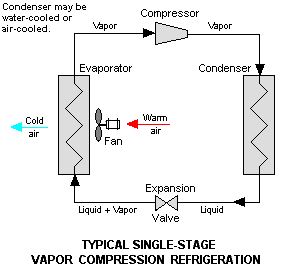
Importance of Exhaust Gas Mass Flow Rate
When it comes to understanding and optimizing the performance of engines and exhaust systems, calculating the mass flow rate of exhaust gas is of utmost importance. The mass flow rate provides crucial information about the amount of exhaust gas being expelled from the system per unit of time. By accurately determining the mass flow rate, engineers and researchers can evaluate the efficiency of combustion processes, assess emissions, and design effective exhaust systems.
The mass flow rate of exhaust gas is particularly significant in the automotive industry, where it plays a vital role in meeting emission standards and improving fuel efficiency. It helps engineers identify potential issues such as incomplete combustion, excessive emissions, or restricted flow, allowing them to make necessary adjustments to enhance engine performance and reduce environmental impact.
Calculation of Exhaust Gas Mass Flow Rate
To calculate the mass flow rate of exhaust gas, we need to consider several factors, including the volume flow rate, density, and velocity of the gas. The equation used to calculate mass flow rate is:
Mass Flow Rate = Volume Flow Rate x Density
Let’s break down the steps involved in calculating the mass flow rate:
-
Determine the Volume Flow Rate:
The volume flow rate represents the amount of gas passing through a given point in the system per unit of time. It is typically measured in cubic meters per second (m³/s) or cubic feet per minute (CFM). To calculate the volume flow rate, you can use various methods such as flowmeters, orifice plates, or differential pressure devices. -
Determine the Density:
The density of the gas is a measure of its mass per unit volume. It is typically expressed in kilograms per cubic meter (kg/m³) or pounds per cubic foot (lb/ft³). The density of exhaust gas depends on factors such as temperature, pressure, and composition. It can be obtained from gas property tables or calculated using equations based on the ideal gas law. -
Calculate the Mass Flow Rate:
Once you have the volume flow rate and density, you can multiply them together to obtain the mass flow rate. The resulting value will be expressed in kilograms per second (kg/s) or pounds per minute (lb/min), depending on the units used for volume flow rate and density.
It is important to note that the mass flow rate remains constant throughout a closed system, in accordance with the principle of conservation of mass. This means that regardless of changes in velocity or cross-sectional area, the mass flow rate will remain the same as long as there are no additions or subtractions of mass within the system.
In engineering and thermodynamics, accurately calculating the mass flow rate of exhaust gas is crucial for designing efficient systems, optimizing performance, and meeting regulatory requirements. By understanding the principles and equations involved, engineers can make informed decisions to improve the overall efficiency and environmental impact of exhaust systems.
How to Calculate Mass Flow Rate of Gas
Calculation of Mass Flow Rate of Gas
When it comes to fluid dynamics, calculating the mass flow rate of a gas is an essential task. Mass flow rate refers to the amount of mass that passes through a given point per unit of time. It is a crucial parameter in various fields, including engineering, thermodynamics, and fluid mechanics. In this section, we will explore how to calculate the mass flow rate of a gas and understand the underlying principles.
To calculate the mass flow rate of a gas, we need to consider a few key factors: the volume flow rate, density, and velocity of the gas. The equation for mass flow rate is derived from the principle of conservation of mass, which states that mass cannot be created or destroyed, only transferred or transformed.
The equation for mass flow rate is as follows:
Mass Flow Rate = Volume Flow Rate x Density
Let’s break down each component of the equation to understand how to calculate the mass flow rate of a gas.
Volume Flow Rate
The volume flow rate refers to the volume of gas that passes through a given point per unit of time. It is typically measured in cubic meters per second (m³/s) or cubic feet per minute (CFM). To calculate the volume flow rate, we need to multiply the cross-sectional area of the flow by the velocity of the gas.
Volume Flow Rate = Cross-Sectional Area x Velocity
Density
Density is a measure of how much mass is contained in a given volume of a substance. In the context of gas flow, density is typically measured in kilograms per cubic meter (kg/m³) or pounds per cubic foot (lb/ft³). The density of a gas depends on various factors, including temperature and pressure. It can be calculated using the ideal gas law or obtained from reference tables.
Velocity
Velocity refers to the speed at which the gas is flowing. It is typically measured in meters per second (m/s) or feet per second (ft/s). The velocity of a gas can be determined using various methods, such as using a flowmeter, measuring the pressure difference across a nozzle or orifice, or using Bernoulli’s equation.
Once we have determined the volume flow rate, density, and velocity of the gas, we can plug these values into the equation for mass flow rate to calculate the desired parameter.
Units and Measurement
When calculating the mass flow rate of a gas, it is crucial to ensure that all the units are consistent. For example, if the volume flow rate is measured in cubic meters per second, the density should be in kilograms per cubic meter, and the resulting mass flow rate will be in kilograms per second. It is essential to convert units if necessary to maintain consistency and accuracy in the calculations.
In engineering and scientific applications, precise measurements are crucial. Therefore, it is essential to use accurate instruments and techniques to measure the various parameters involved in calculating the mass flow rate of a gas. Flowmeters, pressure sensors, and temperature sensors are commonly used tools in these measurements.
Understanding how to calculate the mass flow rate of a gas is fundamental in many engineering and scientific disciplines. By considering the volume flow rate, density, and velocity of the gas, we can determine the amount of mass that passes through a given point per unit of time. This knowledge is invaluable in designing and optimizing systems that involve gas flow, such as pipelines, nozzles, and ventilation systems.
How to Calculate Mass Flow Rate of Refrigerant
Determining Refrigerating Capacity
When it comes to refrigeration systems, understanding the mass flow rate of the refrigerant is crucial for efficient operation. The mass flow rate refers to the amount of refrigerant that passes through a specific point in the system per unit of time. By calculating the mass flow rate, engineers and technicians can determine the refrigerating capacity of the system and make informed decisions regarding its performance and efficiency.
To determine the refrigerating capacity, several factors need to be considered. These include the specific heat capacity of the refrigerant, the temperature difference across the evaporator or condenser, and the rate at which heat is transferred. By analyzing these factors, it becomes possible to calculate the mass flow rate of the refrigerant accurately.
Calculation of Mass Flow Rate of Refrigerant
To calculate the mass flow rate of the refrigerant, engineers and technicians rely on a combination of fluid dynamics principles and thermodynamic equations. The mass flow rate can be determined using the equation:
Mass Flow Rate = Volume Flow Rate x Density
The volume flow rate refers to the volume of refrigerant passing through a given point in the system per unit of time. It can be calculated using the equation:
Volume Flow Rate = Velocity x Cross-sectional Area
The velocity represents the speed at which the refrigerant is flowing, while the cross-sectional area refers to the area through which the refrigerant is passing. By multiplying these two values, the volume flow rate can be obtained.
The density of the refrigerant is a crucial parameter in the calculation. It represents the mass per unit volume of the refrigerant and can vary depending on factors such as temperature and pressure. To determine the density, engineers and technicians often rely on tables or equations specific to the refrigerant being used.
Once the volume flow rate and density are known, the mass flow rate can be calculated by multiplying these two values together. The resulting value represents the amount of refrigerant passing through the system per unit of time and is typically measured in kilograms per second (kg/s) or pounds per second (lb/s).
It is important to note that the mass flow rate is subject to the principle of conservation of mass. This principle states that mass cannot be created or destroyed but can only be transferred or transformed. Therefore, the mass flow rate entering a specific point in the system must be equal to the mass flow rate exiting that point.
In practical applications, engineers and technicians often use various measurement devices such as flowmeters, nozzles, orifices, or pressure sensors to determine the relevant parameters required for calculating the mass flow rate. These devices provide accurate readings and allow for precise calculations, ensuring the efficient operation of refrigeration systems.
In conclusion, calculating the mass flow rate of refrigerant is essential for understanding the performance and efficiency of refrigeration systems. By considering factors such as the specific heat capacity, temperature difference, and heat transfer rate, engineers and technicians can accurately determine the refrigerating capacity. Using fluid dynamics principles and thermodynamic equations, the mass flow rate can be calculated by multiplying the volume flow rate and density of the refrigerant. This information enables informed decision-making and optimization of refrigeration systems for maximum efficiency.
How to Calculate Mass Flow Rate of Dry Air
To calculate the mass flow rate of dry air, we need to understand the basic principles of fluid dynamics and the equation that governs mass flow rate. Mass flow rate is a fundamental concept in engineering, thermodynamics, and fluid mechanics, and it is crucial for various applications such as designing pipes, nozzles, orifices, and flowmeters.
Calculation of Mass Flow Rate of Dry Air
The mass flow rate of a fluid is defined as the amount of mass passing through a given cross-sectional area per unit time. In the case of dry air, we can calculate the mass flow rate using the equation:
Mass Flow Rate (ṁ) = Density (ρ) x Volume Flow Rate (Q)
The density of dry air can be approximated using the ideal gas law, which states that the density is directly proportional to the pressure and inversely proportional to the temperature. However, for simplicity, we will assume constant density in this calculation.
To calculate the volume flow rate of dry air, we need to know the velocity and the cross-sectional area through which the air is flowing. The volume flow rate (Q) is given by the equation:
Volume Flow Rate (Q) = Velocity (V) x Cross-Sectional Area (A)
Now, let’s break down the steps to calculate the mass flow rate of dry air:
-
Measure the velocity (V) of the air: To determine the velocity, you can use various methods such as an anemometer or a pitot tube. Ensure that the velocity measurement is taken at the same location and under the same conditions as the cross-sectional area measurement.
-
Measure the cross-sectional area (A) through which the air is flowing: This can be done by directly measuring the dimensions of the pipe, nozzle, or orifice through which the air is passing. Alternatively, you can use a flowmeter that provides the cross-sectional area measurement.
-
Calculate the volume flow rate (Q): Multiply the velocity (V) by the cross-sectional area (A) to obtain the volume flow rate (Q).
-
Determine the density (ρ) of dry air: As mentioned earlier, the density of dry air can be approximated using the ideal gas law. However, for simplicity, we will assume a constant density value.
-
Calculate the mass flow rate (ṁ): Multiply the density (ρ) by the volume flow rate (Q) to obtain the mass flow rate (ṁ) of dry air.
To summarize, the mass flow rate of dry air can be calculated by multiplying the density of dry air by the volume flow rate of the air. The volume flow rate is obtained by multiplying the velocity of the air by the cross-sectional area through which it is flowing. By following these steps and using the appropriate units of measurement, you can accurately determine the mass flow rate of dry air for your specific application.
| Steps | Calculation |
|---|---|
| 1. Measure the velocity (V) of the air | Use an anemometer or pitot tube |
| 2. Measure the cross-sectional area (A) | Direct measurement or flowmeter |
| 3. Calculate the volume flow rate (Q) | Multiply velocity (V) by cross-sectional area (A) |
| 4. Determine the density (ρ) of dry air | Use ideal gas law or assume constant density |
| 5. Calculate the mass flow rate (ṁ) | Multiply density (ρ) by volume flow rate (Q) |
Remember, understanding and calculating the mass flow rate of dry air is essential for various engineering and scientific applications. By following these steps and utilizing the appropriate measurements and equations, you can accurately determine the mass flow rate and ensure the efficiency and effectiveness of your system.
How to Calculate Mass Flow Rate of Steam
To accurately determine the mass flow rate of steam, we need to understand the underlying principles of fluid dynamics and utilize the appropriate equations. Mass flow rate is a crucial parameter in various engineering applications, including thermodynamics, fluid mechanics, and measurement.
Formula for Steam Mass Flow Rate
The mass flow rate of steam can be calculated using the equation:
Mass Flow Rate = Volume Flow Rate × Density
The volume flow rate represents the amount of steam passing through a given point per unit time, while density refers to the mass per unit volume of the steam. By multiplying these two values together, we can obtain the mass flow rate of the steam.
To calculate the volume flow rate, we can use the equation:
Volume Flow Rate = Velocity × Cross-Sectional Area
The velocity represents the speed at which the steam is flowing, while the cross-sectional area refers to the area perpendicular to the direction of flow. By multiplying these two values, we can determine the volume flow rate.
Conservation of Mass
The concept of conservation of mass is fundamental in fluid dynamics. According to this principle, the mass entering a system must equal the mass leaving the system. This principle allows us to calculate the mass flow rate by measuring the volume flow rate and density at a specific point.
Units and Measurement
When calculating the mass flow rate of steam, it is essential to ensure that the units are consistent. The SI unit for mass flow rate is kilograms per second (kg/s), while the unit for volume flow rate is cubic meters per second (m³/s). Density is typically measured in kilograms per cubic meter (kg/m³), and velocity is measured in meters per second (m/s).
To obtain accurate measurements, engineers often use specialized instruments such as flowmeters, nozzles, orifices, and pressure sensors. These devices allow for precise measurement of parameters required to calculate the mass flow rate.
Example Calculation
Let’s consider an example to illustrate the calculation of the mass flow rate of steam. Suppose we have a steam pipe with a velocity of 10 m/s and a cross-sectional area of 0.5 m². The density of the steam is 2 kg/m³.
First, we calculate the volume flow rate:
Volume Flow Rate = Velocity × Cross-Sectional Area
Volume Flow Rate = 10 m/s × 0.5 m²
Volume Flow Rate = 5 m³/s
Next, we calculate the mass flow rate:
Mass Flow Rate = Volume Flow Rate × Density
Mass Flow Rate = 5 m³/s × 2 kg/m³
Mass Flow Rate = 10 kg/s
Therefore, the mass flow rate of steam in this example is 10 kg/s.
In conclusion, calculating the mass flow rate of steam involves understanding the principles of fluid dynamics, utilizing appropriate equations, and ensuring consistent units and measurements. By following these steps, engineers can accurately determine the mass flow rate, a crucial parameter in various engineering applications.
How to Calculate Mass Flow Rate of Water
To understand how to calculate the mass flow rate of water, we first need to grasp the concept of mass flow rate itself. Mass flow rate is a fundamental parameter in fluid dynamics that measures the amount of mass passing through a given point per unit of time. It is an essential quantity in various fields, including engineering, thermodynamics, and fluid mechanics.
Calculation of Mass Flow Rate of Water
The mass flow rate of water can be calculated using a simple equation derived from the principle of conservation of mass. The equation is as follows:
Mass Flow Rate = Density × Volume Flow Rate
To calculate the mass flow rate, we need to determine the density of the water and the volume flow rate.
Determining the Density of Water
The density of water is a well-known value and can be considered constant under normal conditions. At room temperature and atmospheric pressure, the density of water is approximately 1000 kilograms per cubic meter (kg/m³). However, it is important to note that the density of water can vary slightly with temperature and pressure. For most practical purposes, using the average density of 1000 kg/m³ is sufficient.
Measuring the Volume Flow Rate
To calculate the mass flow rate, we also need to determine the volume flow rate of water. The volume flow rate measures the amount of water passing through a given point per unit of time. It is typically expressed in cubic meters per second (m³/s) or liters per second (L/s).
There are various methods to measure the volume flow rate of water, depending on the application and available equipment. Some common techniques include using a flowmeter, a nozzle, an orifice, or a pipe with known dimensions. These devices can provide accurate measurements of the volume flow rate.
Once we have determined the volume flow rate, we can proceed with calculating the mass flow rate of water.
Calculating the Mass Flow Rate
To calculate the mass flow rate, we multiply the density of water by the volume flow rate. Let’s consider an example to illustrate this calculation:
Suppose we have a volume flow rate of 0.5 cubic meters per second (m³/s) of water. Using the average density of water (1000 kg/m³), we can calculate the mass flow rate as follows:
Mass Flow Rate = Density × Volume Flow Rate
= 1000 kg/m³ × 0.5 m³/s
= 500 kg/s
Therefore, the mass flow rate of water in this example is 500 kilograms per second (kg/s).
It is important to note that the units used for the density and volume flow rate must be consistent to obtain accurate results. Additionally, when working with different units, appropriate conversions should be applied to ensure accurate calculations.
In conclusion, calculating the mass flow rate of water involves determining the density of water and the volume flow rate. By multiplying these two values together, we can obtain the mass flow rate. This calculation is crucial in various applications, such as fluid dynamics, engineering, and thermodynamics, where understanding the movement of fluids is essential.
How to Calculate Mass Flow Rate from Enthalpy
In fluid dynamics, calculating the mass flow rate is an essential task that helps engineers and scientists understand the movement of fluids through a system. One way to determine the mass flow rate is by utilizing the concept of enthalpy. Enthalpy is a thermodynamic property that accounts for the internal energy of a fluid, including its heat content and work done. By considering the change in enthalpy across a system, we can calculate the mass flow rate accurately.
Calculation of Mass Flow Rate from Enthalpy
To calculate the mass flow rate from enthalpy, we need to consider the conservation of mass principle. According to this principle, the mass entering a system must equal the mass leaving the system. By applying this principle and utilizing the equation for enthalpy, we can determine the mass flow rate.
The equation for mass flow rate from enthalpy is as follows:
Mass Flow Rate (ṁ) = (Enthalpy Change (ΔH)) / (Specific Enthalpy (h))
Where:
– Mass Flow Rate (ṁ) is the amount of mass passing through a given point per unit time.
– Enthalpy Change (ΔH) is the difference in enthalpy between the inlet and outlet of the system.
– Specific Enthalpy (h) is the enthalpy per unit mass of the fluid.
By rearranging the equation, we can solve for the mass flow rate:
ṁ = ΔH / h
To calculate the mass flow rate, we need to know the enthalpy change and the specific enthalpy of the fluid. The enthalpy change can be determined by measuring the heat transfer or work done on the fluid. The specific enthalpy can be obtained from tables or equations specific to the fluid being analyzed.
It is important to note that the units of the enthalpy change and specific enthalpy must be consistent for accurate calculations. Common units for enthalpy include joules (J) or kilojoules (kJ), while specific enthalpy is typically measured in joules per kilogram (J/kg) or kilojoules per kilogram (kJ/kg).
Example Calculation
Let’s consider an example to illustrate the calculation of mass flow rate from enthalpy. Suppose we have a system where the enthalpy change is 500 kJ and the specific enthalpy is 50 kJ/kg. We can use the equation mentioned earlier to find the mass flow rate:
ṁ = ΔH / h
ṁ = 500 kJ / 50 kJ/kg
ṁ = 10 kg/s
In this example, the mass flow rate is determined to be 10 kilograms per second.
Conclusion
Calculating the mass flow rate from enthalpy is a fundamental concept in fluid dynamics. By considering the conservation of mass principle and utilizing the equation for enthalpy, engineers and scientists can accurately determine the amount of mass passing through a system per unit time. This calculation is crucial for various applications in engineering and thermodynamics, allowing for a better understanding of fluid mechanics and system performance.
How to Calculate Mass Flow Rate from Pressure Drop
In fluid dynamics, calculating the mass flow rate is an essential task in various engineering applications. One common method to determine the mass flow rate is by measuring the pressure drop across a system. By understanding the relationship between pressure drop and mass flow rate, we can gain valuable insights into the behavior of fluids in different scenarios.
Calculation of Mass Flow Rate from Pressure Drop
To calculate the mass flow rate from a pressure drop, we need to consider several factors, including the fluid’s density, velocity, and the cross-sectional area of the flow. The equation we use to calculate the mass flow rate is derived from the principle of conservation of mass.
The equation for mass flow rate is as follows:
Mass Flow Rate = Density * Velocity * Cross-sectional Area
Let’s break down each component of the equation to understand how they contribute to the calculation.
Density
Density is a measure of how much mass is contained within a given volume of a substance. It is usually represented by the Greek letter rho (ρ) and is measured in kilograms per cubic meter (kg/m³). The density of a fluid is influenced by factors such as temperature and pressure.
To calculate the mass flow rate, we need to know the density of the fluid. This information can be obtained from fluid property tables or by using equations specific to the fluid being analyzed.
Velocity
Velocity refers to the speed at which the fluid is flowing through a particular point in the system. It is typically measured in meters per second (m/s). The velocity of the fluid can be determined by measuring the flow rate or by using flow measurement devices such as flowmeters.
Cross-sectional Area
The cross-sectional area is the area perpendicular to the direction of flow. It represents the size of the opening through which the fluid is passing. The cross-sectional area is measured in square meters (m²) and can be calculated using the dimensions of the flow path, such as the diameter of a pipe or the dimensions of a nozzle or orifice.
Putting It All Together
To calculate the mass flow rate from a pressure drop, we need to gather the necessary information: the density of the fluid, the velocity of the flow, and the cross-sectional area of the system. Once we have these values, we can plug them into the equation mentioned earlier:
Mass Flow Rate = Density * Velocity * Cross-sectional Area
By substituting the appropriate units for each variable, we can obtain the mass flow rate in units such as kilograms per second (kg/s) or pounds per hour (lb/hr), depending on the desired measurement.
Example Calculation
Let’s consider an example to illustrate the calculation of mass flow rate from a pressure drop. Suppose we have a pipe with a diameter of 0.5 meters and a fluid flowing through it with a velocity of 2 meters per second. The density of the fluid is 1000 kilograms per cubic meter.
Using the equation mentioned earlier, we can calculate the cross-sectional area of the pipe:
Cross-sectional Area = π * (Diameter/2)^2
= π * (0.5/2)^2
= 0.1963 square meters
Now, we can calculate the mass flow rate:
Mass Flow Rate = Density * Velocity * Cross-sectional Area
= 1000 kg/m³ * 2 m/s * 0.1963 m²
= 392.6 kg/s
Therefore, the mass flow rate through the pipe is 392.6 kilograms per second.
Conclusion
Calculating the mass flow rate from a pressure drop is a fundamental concept in fluid mechanics and engineering. By understanding the relationship between pressure drop, density, velocity, and cross-sectional area, we can accurately determine the mass flow rate of a fluid. This knowledge is crucial in various industries, including manufacturing, energy, and transportation, where the efficient movement of fluids is essential for optimal system performance.
How to Calculate Mass Flow Rate of Fuel in an Engine
Fuel mass flow rate is an important parameter to consider when analyzing the performance of an engine. It helps us understand how much fuel is being consumed and how efficiently it is being utilized. By calculating the mass flow rate of fuel, we can gain insights into the engine’s efficiency and make informed decisions regarding its operation and optimization.
Calculation of Fuel Mass Flow Rate in an Engine
To calculate the mass flow rate of fuel in an engine, we need to consider several factors, including the volume flow rate, density, and velocity of the fuel. The equation used to calculate the mass flow rate is derived from the principle of conservation of mass.
-
Determine the Volume Flow Rate: The volume flow rate represents the amount of fuel passing through a specific point in the engine per unit time. It is typically measured in liters per second (L/s) or cubic meters per second (m³/s). To calculate the volume flow rate, we need to know the cross-sectional area of the flow path and the velocity of the fuel.
-
Measure the Cross-Sectional Area: The cross-sectional area refers to the area perpendicular to the direction of flow. It can be determined by measuring the dimensions of the flow path, such as the diameter of a pipe or the area of an orifice. Ensure that the units of the cross-sectional area are consistent with the units used for the velocity and density.
-
Determine the Velocity of the Fuel: The velocity of the fuel represents the speed at which it flows through the engine. It can be measured using various techniques, such as flowmeters or by calculating it based on the pressure drop across a nozzle. Ensure that the units of velocity are consistent with the units used for the cross-sectional area and density.
-
Calculate the Density of the Fuel: The density of the fuel is a measure of its mass per unit volume. It can vary depending on the type of fuel being used. The density is typically provided by fuel manufacturers and can be expressed in kilograms per cubic meter (kg/m³) or grams per cubic centimeter (g/cm³).
-
Apply the Mass Flow Rate Equation: Once we have obtained the volume flow rate, density, and velocity of the fuel, we can calculate the mass flow rate using the equation:
Mass Flow Rate = Volume Flow Rate × Density
Ensure that the units of the mass flow rate are consistent with the units used for the volume flow rate and density. It is also important to note that the mass flow rate can be positive or negative, depending on the direction of flow.
By following these steps and accurately measuring the necessary parameters, we can calculate the mass flow rate of fuel in an engine. This information can be used to monitor fuel consumption, optimize engine performance, and make informed decisions regarding fuel efficiency. Understanding the mass flow rate is crucial for engineers and technicians working in the field of thermodynamics, fluid mechanics, and engineering.
How to Calculate Mass Flow Rate in Ansys Fluent
Introduction to Ansys Fluent
Ansys Fluent is a powerful computational fluid dynamics (CFD) software widely used in engineering and scientific applications. It allows engineers and researchers to simulate and analyze fluid flow, heat transfer, and other related phenomena. One important parameter in fluid dynamics is the mass flow rate, which measures the amount of mass passing through a given point per unit time. Calculating the mass flow rate accurately is crucial for understanding and optimizing various processes involving fluids.
Calculation of Mass Flow Rate in Ansys Fluent
To calculate the mass flow rate in Ansys Fluent, we need to consider the fundamental principle of conservation of mass. According to this principle, the mass entering a control volume must be equal to the mass leaving it, assuming no mass is being generated or consumed within the volume.
To calculate the mass flow rate, we can use the equation:
Mass Flow Rate = Density × Velocity × Cross-sectional Area
Let’s break down each component of this equation:
-
Density: Density is a measure of how much mass is contained within a given volume of a substance. It is typically denoted by the symbol ρ and is expressed in units such as kg/m³ or g/cm³. In Ansys Fluent, the density of the fluid can be specified based on the properties of the material being simulated.
-
Velocity: Velocity refers to the speed at which the fluid is flowing. It is denoted by the symbol v and is typically measured in units of meters per second (m/s) or feet per second (ft/s). In Ansys Fluent, the velocity can be obtained from the simulation results or specified as an input parameter.
-
Cross-sectional Area: The cross-sectional area represents the area perpendicular to the flow direction. It is denoted by the symbol A and is typically measured in square meters (m²) or square feet (ft²). The cross-sectional area depends on the geometry of the system under consideration, such as the shape of a pipe, nozzle, orifice, or flowmeter.
By multiplying the density, velocity, and cross-sectional area, we can determine the mass flow rate. It is important to ensure that the units of each component are consistent to obtain accurate results.
Example Calculation
Let’s consider a simple example to illustrate the calculation of mass flow rate in Ansys Fluent. Suppose we have a pipe with a diameter of 0.1 meters and water flowing through it at a velocity of 2 meters per second. The density of water is approximately 1000 kg/m³.
To calculate the mass flow rate, we first need to determine the cross-sectional area of the pipe. The cross-sectional area of a pipe can be calculated using the formula:
Cross-sectional Area = π × (Diameter/2)²
Substituting the values into the equation:
Cross-sectional Area = π × (0.1/2)² = 0.00785 m²
Next, we multiply the density, velocity, and cross-sectional area:
Mass Flow Rate = 1000 kg/m³ × 2 m/s × 0.00785 m² = 15.7 kg/s
Therefore, the mass flow rate of water through the pipe is 15.7 kilograms per second.
Conclusion
Calculating the mass flow rate in Ansys Fluent is essential for understanding and analyzing fluid dynamics in various engineering and scientific applications. By considering the principles of conservation of mass and using the equation involving density, velocity, and cross-sectional area, engineers and researchers can accurately determine the mass flow rate. This information is crucial for designing and optimizing systems involving fluid flow, such as pipes, nozzles, orifices, and flowmeters.
Frequently Asked Questions
How to calculate mass flow rate in a heat exchanger?
To calculate the mass flow rate in a heat exchanger, you can use the equation:
[ text{Mass Flow Rate} = text{Volume Flow Rate} times text{Density} ]
How to calculate mass flow rate in Paraview?
Paraview is a visualization software and does not directly calculate mass flow rate. However, you can export the data from Paraview and use other tools or equations to calculate the mass flow rate.
How to calculate mass flow rate of a compressor?
To calculate the mass flow rate of a compressor, you can use the equation:
[ text{Mass Flow Rate} = text{Volume Flow Rate} times text{Density} ]
How to find mass flow rate in thermodynamics?
In thermodynamics, you can find the mass flow rate by using the equation:
[ text{Mass Flow Rate} = text{Volume Flow Rate} times text{Density} ]
How to calculate mass flow rate of exhaust gas?
To calculate the mass flow rate of exhaust gas, you can use the equation:
[ text{Mass Flow Rate} = text{Volume Flow Rate} times text{Density} ]
How to calculate mass flow rate of gas?
To calculate the mass flow rate of a gas, you can use the equation:
[ text{Mass Flow Rate} = text{Volume Flow Rate} times text{Density} ]
How to calculate mass flow rate from density?
To calculate the mass flow rate from density, you can use the equation:
[ text{Mass Flow Rate} = text{Volume Flow Rate} times text{Density} ]
How to calculate mass flow rate of air?
To calculate the mass flow rate of air, you can use the equation:
[ text{Mass Flow Rate} = text{Volume Flow Rate} times text{Density} ]
How to calculate mass flow rate of refrigerant?
To calculate the mass flow rate of a refrigerant, you can use the equation:
[ text{Mass Flow Rate} = text{Volume Flow Rate} times text{Density} ]
How to calculate mass flow rate of dry air?
To calculate the mass flow rate of dry air, you can use the equation:
[ text{Mass Flow Rate} = text{Volume Flow Rate} times text{Density} ]
How to calculate mass flow rate of steam?
To calculate the mass flow rate of steam, you can use the equation:
[ text{Mass Flow Rate} = text{Volume Flow Rate} times text{Density} ]
How to calculate mass flow rate of water?
To calculate the mass flow rate of water, you can use the equation:
[ text{Mass Flow Rate} = text{Volume Flow Rate} times text{Density} ]
How to calculate mass flow rate from enthalpy?
To calculate the mass flow rate from enthalpy, you can use the equation:
[ text{Mass Flow Rate} = frac{text{Heat Transfer Rate}}{text{Enthalpy Difference}} ]
How to calculate mass flow rate from pressure drop?
To calculate the mass flow rate from pressure drop, you can use the equation:
[ text{Mass Flow Rate} = frac{text{Pressure Drop}}{text{Resistance}} ]
How to calculate mass flow rate of fuel in an engine?
To calculate the mass flow rate of fuel in an engine, you can use the equation:
[ text{Mass Flow Rate} = text{Fuel Flow Rate} times text{Density} ]
How to calculate mass flow rate?
To calculate the mass flow rate, you can use the equation:
[ text{Mass Flow Rate} = text{Volume Flow Rate} times text{Density} ]
How to calculate mass flow rate in ANSYS Fluent?
In ANSYS Fluent, you can calculate the mass flow rate by post-processing the simulation results. The software provides tools to extract the mass flow rate from the simulation domain.




